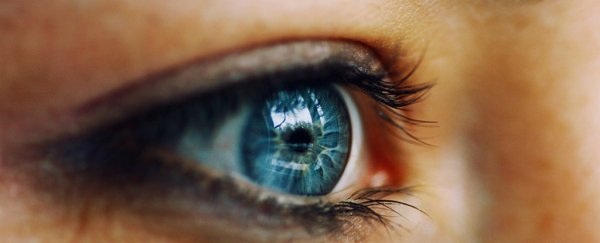Researchers have identified a new, distinct eye movement that we all perform on a daily basis, but never actually notice.
This new movement, which is hidden by our constant blinking, helps to help stabilise the images we perceive by 'resetting' our eyes after they move around to view an object.
"We were really surprised to discover this new type of eye movement and it was not what we had anticipated from the experiment," says one of the team, Mohammad Khazali from the University of Tübingen in Germany.
"We had expected to find that another, already well-known type of eye movement is synchronised to blinking."
Khazali and his team weren't actually looking for a new eye movement. Instead, they were trying to see if an involuntary movement called torsional optokinetic nystagmus (tOKN) happens when we blink.
tOKN occurs when a person is looking at a rotating object, causing the eye to jump directions quickly to make sense of the motion.
Imagine you're looking a globe rotating on its stand. As it moves, your eyes follow a spot on the globe, then snap back to the opposite side to keep track - that's tOKN.
To figure out if this happens while we blink, the team gathered 11 subjects, connected tiny wires to their corneas, and tracked how their eyes twisted when they followed a pattern of dots.
They assumed that tOKN would frequently reset the eye's movements back to their original spot, to avoid straining the eye muscles. But instead, they found that these 'resets' during blinking were imperfect, deviating roughly 3 to 8 degrees, depending on the subject.
Another clue that they were observing something different from tOKN was that even with the repeated resetting, the subjects' eyes would continue to twist until the muscles were at their max.
At this point, during a blink, the team observed the eye completely resetting back to its untwisted state. The movement caused the eye to stabilise, much like a video camera does to keep a level picture.
"The eye's sharpest vision is enabled by a spot on the light-sensitive sheet of the retina called the fovea and this needs to stay balanced to ensure objects of interest can be scrutinised in an optimum way," says Khazali.
They've called this new movement blink-associated resetting movement (BARM), and have even discovered that it happens when a person isn't even looking at a rotating object, unlike the tOKN resets.
They say these movements likely reduce the amount of strain our eyes experience, and allow us to view objects in a more precise, stable way.
The findings also show how important blinking is for our daily lives. The team reports that we spend roughly one-tenth of our waking hours blinking, without ever really noticing it (although you're probably noticing it now because we're talking about it).
Besides keeping our eyes lubricated, research suggests that it might even give our minds a very short rest throughout the day. Hooray for blinking!
It just goes to show how much we still have to learn about our own bodies, and hopefully, as our technologies continue to get better, we will tease out some of the mysteries of other body parts, too.
"To discover such a ubiquitous phenomenon in such a well-studied part of the human body was astonishing to us and we're very grateful to the volunteers who took part in the study," says Khazali.
The team's findings were published in the journal eLife.
